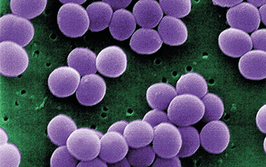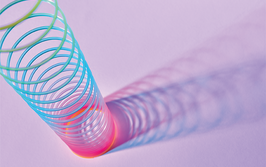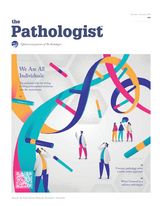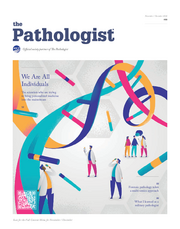Through the Spectroscopic Glass
What might the future hold for optical spectroscopy and diagnostics?
Richard Crocombe | | 3 min read | Discussion
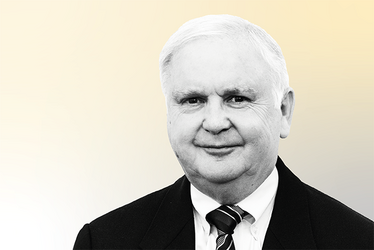
Credit: Supplied by Author
The key benefit of a portable spectrometer is providing a rapid answer at the point of need, significantly enhancing efficiency, quality, safety, and reduced cycle time – boosting overall confidence in the process. Until now, optical spectroscopy (excluding fluorescence) has not been a major player in the clinical field because it generates complex spectra that are hard to interpret. Plus, the instruments are often bulky and expensive. Portable spectrometers and spectroscopic sensors are poised to change that paradigm.
It will take time for technologies to mature and be applied to miniature spectroscopy. The challenge lies in developing clinical applications, gaining approval, and convincing the medical field of their effectiveness in improving patient outcomes.
Looking ahead to newer technologies, such as photonic integrated circuits and planar optics, we have the potential to enable much smaller spectrometers, manufactured on a large scale using semiconductor techniques. Of course, reducing size and cost provides opportunities across various applications. In the short term, this includes “wearables” and “ingestibles.”
Miniature and lightweight wearable sensors have the ability to monitor heart rate, blood pressure, and blood oxygen levels – transmitting data to a monitoring station. Ingestibles are able to monitor “from within” – equipped with a camera, a spectroscopic sensor, and an ablation device for treating digestive conditions. Using a small multispectral or hyperspectral camera could also provide support in surgery, determining tumor margins. These are just a few of the possibilities this technology could bring to the clinic.
Health-related smartwatches and rings have already reached popularity, with some professional sports teams taking advantage of this technology. Manufacturers are hoping to add more features, including a non-invasive optical blood glucose monitor. Unfortunately, this application has been incredibly difficult to achieve despite 30-40 years of research from well-funded groups.
Nevertheless, development continues across large publicized projects and secret groups. Notable examples include a smartwatch with quantum cascade lasers and photonic integrated circuits (1), and mid-infrared quantum cascade lasers with photothermal detection (2).
We’ve even seen studies showcasing the capabilities of smartphones as thermometers using microbolometers. Some healthcare systems are already taking advantage of the telehealth applications – allowing for easy photo taking and sharing of skin conditions among clinicians. Microbolometer cameras are available today as additions to smartphones for detecting heat leaks in houses, and though clinical use is still developing, they could eventually be used to monitor wound healing at home via telehealth consultations.
Another concept, which is slightly bizarre, is a “smart toilet” for analyzing stool and urine using imaging and spectroscopy to provide health insights and diet suggestions. Scientific papers continue to delve into this topic and a product has been developed from a start-up – leading to discussions by established plumbing companies at events like the Consumer Electronics Show.
Technologies are advancing rapidly, as described above; however, a large amount of mathematical work (chemometrics) is required to turn the volume of data recorded by a spectroscopic sensor into usable information. This opposes the specific tests already in use across the clinical community based on antibodies for immediate results. In pathology, visual inspection of stained tissue sections is the established method. Spectroscopic researchers are using infrared and Raman imaging to replicate the results without stains. The challenge is to produce results that clinicians recognize and trust, and then obtain regulatory approval.
Looking towards the future of diagnostics, it's likely that optical spectroscopic techniques will be available in cost-effective, miniature packages with an emphasis on the consumer rather than the clinical space – such as smart watches and other wearables. Of course, clinical applications are guaranteed to follow, but I believe we’re at least 10 years from this integration.
Looking even further into the future, I expect spectroscopic sensors will become a key part of the home without us even realizing it, from smoke detectors, vacuum cleaners, refrigerators, and washing machines. I implore anyone interested in keeping up to date with this topic to look at SPIE’s BiOS meeting (3) – a part of Photonics West that focuses on biophotonics, biomedical optics, and imaging.
- Rockley Photonics (2021). Available at: https://rockleyphotonics.com/wp-content/uploads/2021/07/Rockley-Photonics-Biomarker-Sensing-on-the-Wrist.pdf
- T Lubinski et al., J Diabetes Sci Technol, 15, 1 (2020). PMID: 32627580.
- SPIE (2024). Available at: https://spie.org/conferences-and-exhibitions/photonics-west/program/conferences/bios
Crocombe Spectroscopic Consulting, LLC, Winchester, UK

